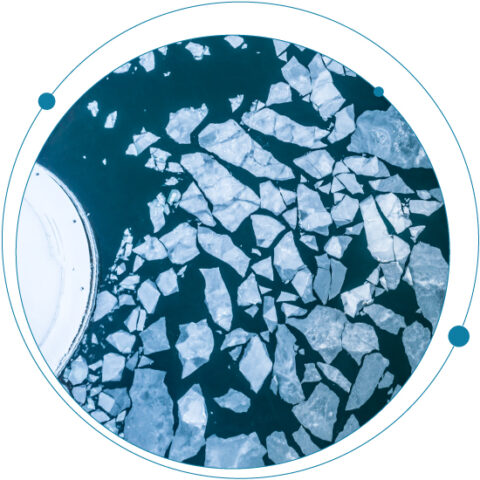Read time: 2 minutes
 Short-chain per- and polyfluoroalkyl substances (PFAS) are increasing in the Canadian Arctic environment, with the most rapid increases occurring post-2000, according to a recent study in Geophysical Research Letters (April 2020). For example, trifluoracetic acid (TFA) in the Devon Ice Cap increased ~10-fold from 1.4 μg/m2 per year during 1977–1989 to 10.3 μg/m2 per year during 2001–2014. The authors of the study suggest that the increased short-chain PFAS concentrations post-2000 were from new chlorofluorocarbon (CFC) replacement chemicals produced as a result of the 1987 Montreal Protocol treaty. One of the paper’s lead authors, Professor Cora Young of York University in Toronto, Ontario, discussed the study findings during the inaugural episode of my new video podcast, “PFAS fireside chats with Craig Butt.
Short-chain per- and polyfluoroalkyl substances (PFAS) are increasing in the Canadian Arctic environment, with the most rapid increases occurring post-2000, according to a recent study in Geophysical Research Letters (April 2020). For example, trifluoracetic acid (TFA) in the Devon Ice Cap increased ~10-fold from 1.4 μg/m2 per year during 1977–1989 to 10.3 μg/m2 per year during 2001–2014. The authors of the study suggest that the increased short-chain PFAS concentrations post-2000 were from new chlorofluorocarbon (CFC) replacement chemicals produced as a result of the 1987 Montreal Protocol treaty. One of the paper’s lead authors, Professor Cora Young of York University in Toronto, Ontario, discussed the study findings during the inaugural episode of my new video podcast, “PFAS fireside chats with Craig Butt.
PFAS are well-known environmental contaminants, and they are widely detected in surface and drinking water and in humans and wildlife. PFAS have many uses in commercial products due to their properties, such as stain repellency, and they are also used in firefighting foams to combat petroleum fires. The most widely known PFAS chemicals are perfluorooctane sulfonate (PFOS) and perfluorooctanoic acid (PFOA), which have 8 carbons. The chemicals examined in the study by Young et al. are similar to PFOA, but they have 2–4 carbons and are therefore known as short-chain PFAS. Chemicals from the fluoropolymer industry are typically attributed to long-chain PFAS, such as PFOA, that are found in remote environments. While these chemicals could explain the ice core concentrations of trifluoroacetic acid (TFA), which is 2 carbons, and perfluoropropanoic acid (PFPrA), which is 3 carbons, the study instead attributes their source to the degradation of CFC replacement chemicals, such as hydrochlorofluorocarbons (HCFCs) and hydrofluorocarbons (HFCs). These CFC replacements were manufactured to respond to the Montreal Protocol to combat ozone hole depletion. Therefore, international efforts to solve an environmental crisis may have unintentionally caused the global contamination of short-chain PFAS. While the study examined PFAS levels in the Canadian Arctic environment, Young believes that short-short-chain PFAS levels will be higher in more populated regions. However, due to their analytical difficulty, few labs are currently monitoring these “shorties,” which represents a major data gap. Also, while the human health implications are currently unknown, recent studies suggest that TFA may be more abundant in humans than previously thought.
Click here to read Prof. Cora and team’s full study.




0 Comments